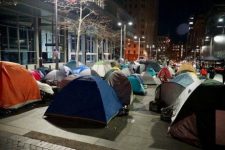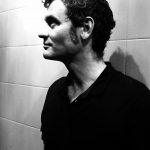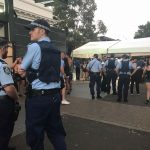Sleeping Rough in Sydney: An Interview With Martin Place Mayor Lanz Priestley

The release of the 2016 Census homelessness statistics in March confirmed what most already knew: the amount of people with no permanent fixed address in this country is on the rise. The ABS figures revealed that 50 out of every 10,000 Australians is now homeless.
Over the five year period from 2011 to 2016, the number of homeless people in this country rose by 14 percent. And in this state, the increase was even greater: 37,715 homeless people in NSW marked a 27 percent increase in people experiencing homelessness statewide.
While those sleeping on the streets only account for about 7 percent of people with no real home, they’re the most visible reminder of this growing crisis in homelessness in one of the wealthiest nations on the planet. And indeed, rough sleepers are amongst those doing it the toughest.
The largest increase in rough sleeping nationwide was also found in NSW. There was a 35 percent rise in people sleeping rough in this state. In 2016, there were 2,588 rough sleepers, compared with 1,924 in 2011.
Last month’s City of Sydney street count seems to suggest that things are improving in this city. It found there were 278 people sleeping rough on the city streets. This was a drop of over 100 people compared with the August 2017 count, which found there were 386 rough sleepers in the city.
Although, those out there on the ground dispute that things are improving.
Temporary or beyond reach
Following the release of the latest street count figures, Sydney lord mayor Clover Moore called on the NSW government to increase funding for social and affordable housing. She said that while homelessness services are providing temporary fixes, more permanent solutions are needed.
Homelessness advocates point out that temporary accommodation only provides shelter for a short period of time, and it’s often inadequate and dangerous. This leads to people who access this type of accommodation ending up back on the streets again.
The NSW government announced last July that it’s donating one hectare of land in Redfern to allow investors to build new rental dwellings under a 40 year lease, as part of its Communities Plus program.
This is a build-to-rent model, which means that 70 percent of the dwellings will be for renters at the regular market price, while 30 percent will be for affordable housing. However, those in the homelessness sector state that this is unlikely to help rough sleepers.
Taking the initiative
In order to provide a solution for those sleeping rough in Sydney, Lanz Priestley set up the Martin Place Tent City back in December 2016. It’s Street Kitchen and Safe Space fed hundreds of the city’s needy on a daily basis and provided a secure place for rough sleepers to stay overnight.
After the City of Sydney tried to evict the operation in June last year, the Tent City continued on until the NSW Coalition government rushed through legislation in August specifically designed to kick the rough sleepers out of the pedestrian mall.
Sydney Criminal Lawyers® spoke with long-time homelessness activist Lanz Priestley about the situation on Sydney’s streets at present, what happened to the rough sleepers who were staying at the Martin Place Tent City, and this state’s continuing assault on the rights of the homeless.
Firstly, last month’s City of Sydney street count found that over the last 12 months the number of rough sleepers in this city has decreased by over 100 people.
Lanz, is this what you’ve found? Has there been a marked decline in the number of people sleeping on the city streets over the last year?
Not at all. We’ve actually seen an increase in the number of people sleeping on the streets. We did a count about a month before last year’s count and found about 300 more.
This city’s count – and homeless counts Australia-wide as I understand – happen between 11 at night and 2 or 3 in the morning.
A lot of the elderly people don’t sleep at that time. They’re in cafes, or they’ve found a McDonald’s, where they can sit and be relatively comfortable at night. And they go out and sleep in parks in the daytime. So, nobody’s counting them.
Nobody is counting the full-time workers, who are sleeping in vehicles. Nobody is counting the full-time workers who aren’t engaging with services and aren’t earning enough to pay for permanent accommodation.
Those are just a few examples, but there are many more. We stopped taking notice of the homeless counts back in 2010, because they’re hopelessly inadequate.
Last year, when you were running the Martin Place Tent City, you had run-ins with both the local council and the state government.
What are your thoughts on how both these levels of government are tackling the city’s homelessness situation?
On their watch, the problem has not been solved at all. We’re doing nothing to stop people becoming homeless in the first place.
We’re doing nothing to address the affordability of housing or energy or associated housing costs generally. While we don’t do that, more and more people will become homeless.
In the three months after we pulled Tent City down, I probably dealt with more newly homeless people, than in the nine months that we had Tent City up.
The NSW government recently announced it was donating land in Redfern, so that investors can built new rental accommodation and 30 percent of these dwellings will be for affordable and social housing.
How effective do you think this model will be for those doing it tough?
It’s a token solution. And a token solution after the fact. As far as people who are doing it tough, I don’t know they’ll access very much of that housing, because a lot of the affordable housing that’s planned to be built in Redfern is being prioritised for emergency services workers, such as police and nurses.
That takes that housing out of the solutions basket so to speak. I have no problem with those people having affordable housing. But, arguably, the entire workforce in Sydney needs to be housed affordably by the City of Sydney.
Shouldn’t each municipality have a responsibility to at least house its own workforce?
And for those who are out on the Sydney streets at the moment what’s out there for them? What sort of services exist? And what sort of options are available?
The Housing Department seem to have taken the proactive housing model that they’ve evolved and they use that these days to try and drive people into the same services that never worked prior to Tent City.
As far as established services go, I don’t know there’s very much that’s actually working. As far as services that are working, there are plenty of services operating out of Martin Place.
Recently, we’ve launched one called Blanket Patrol, because we know that a lot of people have been returning to their stuff only to find that it’s gone. And there wasn’t the resource for them to obtain blankets at 9 o’clock at night. So, we’ve put Blanket Patrol into place.
Looking back, what sort of impact would you say the Martin Place Tent City had?
Undoubtedly, we got a lot of people accommodated by the government or by us. The last time, I looked the government had accommodated about 136 people directly as a result of Tent City. And we’d accommodated 212.
There was something like 490 people that came through Tent City. And they stayed there for between a week and a month. Some only stayed for two or three days. But, you know what, they were then able to go and sort their own shit out. To me, that’s the actual success of Tent City.
People that are becoming homeless now, we really struggle to figure out a way forward for them. It would be so much easier if there was a facility that operated 24 hours a day that provided the services that we did in Martin Place.
The Tent City left Martin Place after the Coalition government passed new laws. A similar incident occurred in Melbourne last year, when a group of homeless people sleeping outside of Flinders Street Station became the focus of political attention.
Former Melbourne lord mayor Robert Doyle suggested the solution was to ban rough sleeping in the CBD. But, these laws never came to fruition.
In your opinion, is there a growing trend amongst authorities in trying to criminalise people who are sleeping rough?
I’m vaguely aware of what happened in Melbourne, but I can’t really comment on that.
But, over a period of time in Sydney, there’s been an ongoing erosion of homeless people’s rights. And there’s been a sustained effort by all levels of government and NGOs – in some cases – to push homeless people out of Sydney.
An example of that was when Bill Crews moved his Exodus Foundation out to Ashfield. That was well funded by John Singleton and all of that. The aim, of course, was to attract all the homeless people out to Ashfield.
It didn’t work. It didn’t work then and it’s not likely to work now. And there are some very good reasons for that.
The Martin Place Tent City closed down about 13 months ago now. You’ve already touched on it, but what’s happened to the people who were staying there?
Most of the people who stayed there at the time have by and large been accommodated or found jobs via the government or us.
There’s a legacy of about 20 people who stayed there that are still sleeping rough. For those who used to camp on a regular basis, and weren’t willing to take what the government or we were offering, they’re still on the streets today.
As you’ve mentioned, there are a number of initiatives that are operating out of Martin Place at the moment. Blanket Patrol is one of them.
Can you tell us a bit more about that service?
I’m involved in Blanket Patrol. And we’re still operating the Street Kitchen in Martin Place once a month. The next time is October 6.
Blanket Patrol operates around the city. It tries to identify people who need blankets. We have a phone number, which is 0404 500 454. That number can be wrung 24 hours a day. People can get blankets and sleeping bags if they ring that number.
And lastly, Australia’s one of the most prosperous nations in the world. It’s said to be a country with one of the most equal distributions of wealth.
So, Lanz, what’s going wrong here? Why is homelessness on the rise in such a rich nation?
That can be explained by recent events. Rupert Murdoch turns up in Australia and suddenly we have a change of prime minister. We have everybody talking about this, but we have nobody talking about homelessness.
With the political system we have, it’s inevitable that people that make a lot of money will be listened to first.







